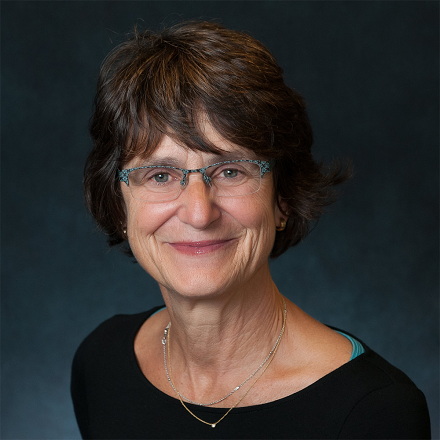
In the News
What Data Says About Rising Cancer Rates Among Younger People
- Nature Portfolio
-
Focus Areas
Chronic Disease Prevention, Environmental Health, Health Care & Population Health -
Issues
Cancer, Population Health -
Expertise
Research – Surveillance -
Programs
Child Health and Development Studies

“Of the many young people whom Cathy Eng has treated for cancer, the person who stood out the most was a young woman with a 65-year-old’s disease. The 16-year-old had flown from China to Texas to receive treatment for a gastrointestinal cancer that typically occurs in older adults. Her parents had sold their house to fund her care, but it was already too late. “She had such advanced disease, there was not much that I could do,” says Eng, now an oncologist at Vanderbilt University Medical Center in Nashville, Tennessee.
Eng specializes in adult cancers. And although the teenager, who she saw about a decade ago, was Eng’s youngest patient, she was hardly the only one to seem too young and healthy for the kind of cancer that she had.
Thousands of miles away, in Mumbai, India, surgeon George Barreto had been noticing the same thing. The observations quickly became personal, he says. Friends and family members were also developing improbable forms of cancer. “And then I made a mistake people should never do,” says Barreto, now at Flinders University in Adelaide, Australia. “I promised them I would get to the bottom of this.”
It took years to make headway on that promise, as oncologists such as Barreto and Eng gathered hard data. Statistics from around the world are now clear: the rates of more than a dozen cancers are increasing among adults under the age of 50. This rise varies from country to country and cancer to cancer, but models based on global data predict that the number of early-onset cancer cases will increase by around 30% between 2019 and 2030. In the United States, colorectal cancer — which typically strikes men in their mid-60s or older — has become the leading cause of cancer death among men under 50. In young women, it has become the second leading cause of cancer death.
As calls mount for better screening, awareness and treatments, investigators are scrambling to explain why rates are increasing. The most likely contributors — such as rising rates of obesity and early-cancer screening — do not fully account for the increase. Some are searching for answers in the gut microbiome or in the genomes of tumours themselves. But many think that the answers are still buried in studies that have tracked the lives and health of children born half a century ago. “If it had been a single smoking gun, our studies would have at least pointed to one factor,” says Sonia Kupfer, a gastroenterologist at the University of Chicago in Illinois. “But it doesn’t seem to be that — it seems to be a combination of many different factors.”
On the increase
In some countries, including the United States, deaths owing to cancer are declining thanks to increased screening, decreasing rates of smoking and new treatment options. Globally, however, cancer is on the rise (see ‘Rising rates’). Early-onset cancers — often defined as those that occur in adults under the age of 50 — still account for only a fraction of the total cases, but the incidence rate has been growing. This rise, coupled with an increase in global population, means that the number of deaths from early-onset cancers has risen by nearly 28% between 1990 and 2019 worldwide. Models also suggest that mortality could climb.
Often, these early-onset cancers affect the digestive system, with some of the sharpest increases in rates of colorectal, pancreatic and stomach cancer. Globally, colorectal cancer is one of the most common cancers and tends to draw the most attention. But others — including breast and prostate cancers — are also on the rise.
In the United States, where data on cancer incidence is particularly rigorous, uterine cancer has increased by 2% each year since the mid-1990s among adults younger than 50. Early-onset breast cancer increased by 3.8% per year between 2016 and 2019.
The rate of cancer among young adults in the United States has increased faster in women than in men, and in Hispanic people faster than in non-Hispanic white people. Colorectal cancer rates in young people are rising faster in American Indian and Alaska Native people than they are in white people (see ‘Health disparities’). And Black people with early onset colorectal cancer are more likely to be diagnosed younger and at a more advanced stage than are white people. “It is likely that social determinants of health are playing a role in early-onset cancer disparities,” says Kupfer. Such determinants include access to healthy foods, lifestyle factors and systemic racism.
Cancer’s shift to younger demographics has driven a push for earlier screening. Advocates have been promoting events targeted at the under 50s. And high-profile cases — such as the 2020 death of actor Chadwick Boseman from colon cancer at the age of 43 — have helped to raise awareness. In 2018, the American Cancer Society urged people to be screened for colorectal cancer starting at age 45, rather than the previous recommendation of 50.
In Alaska, health leaders serving Alaska Native people have been recommending even earlier screening — at age 40 — since 2013. But the barriers to screening are high; many communities are inaccessible by road, and some people have to charter a plane to reach a facility in which they can have a colonoscopy. “If the weather’s bad, you could be there a week,” says Diana Redwood, an epidemiologist at the Alaska Native Tribal Health Consortium in Anchorage.
These efforts have paid off to some extent: screening rates in the community have more than doubled over the past three decades, and now exceed those of state residents who are not Alaska Natives. But mortality from colorectal cancer has not budged, says Redwood. Although colorectal cancer rates are falling in people over 50 years old, the age group that is still most likely to be screened, the rates in younger Alaska Native people are climbing by 5.2% each year.
Genetic clues
The prominence of gastrointestinal cancers and the coincidence with dietary changes in many countries point to the rising rates of obesity and diets rich in processed foods as likely culprits in contributing to rising case rates. But statistical analyses suggest that these factors are not enough to explain the full picture, says Daniel Huang, a hepatologist at the National University of Singapore. “Many have hypothesized that things like obesity and alcohol consumption might explain some of our findings,” he says. “But it looks like you need a deeper dive into the data.”
Those analyses match the anecdotal experiences that clinicians described to Nature: often, the young people they treat were fit and seemingly healthy, with few cancer risk factors. One 32-year-old woman that Eng treated was preparing for a marathon. Previous physicians had dismissed the blood in her stool as irritable bowel syndrome caused by intense training. “She was healthy as can be,” says Eng. “If you looked at her, you would have no idea that more than half of her liver was tumour.”
Prominent cancer-research funders, including the US National Cancer Institute and Cancer Research UK, have supported programmes to find other contributors to early-onset cancer. One approach has been to look for genetic clues in early-onset tumours that might set them apart from tumours in older adults. Pathologist Shuji Ogino at Harvard Medical School in Boston, Massachusetts, and his colleagues have found some possible characteristics of aggressive tumours in early-onset cancers. For example, aggressive tumours are sometimes particularly adept at suppressing the body’s immune responses to cancer, and Ogino’s team has found signs of a muted immune response to some early-onset tumours5.
But these differences are subtle, he says, and researchers have yet to find a clear demarcation between early-onset and later-onset cancers. “It’s not dichotomous, but more like a continuum,” he says.
Researchers have also looked at the microorganisms that reside in the human body. Disruptions in microbiome composition, such as those caused by dietary changes or antibiotics, have been linked to inflammation and increased risk of several diseases, including some forms of cancer. Whether there is a link between the microbiome and early-onset cancers is still in question: results so far are still preliminary and it’s difficult to gather long-term data, says Christopher Lieu, an oncologist at the University of Colorado Cancer Center in Aurora. “The list of things that impact the microbiome is so extensive,” he says. “You’re asking people to recall what they ate as kids, and I can barely remember what I ate for breakfast.”

If the latent period is decades, then where do you look? We believe that you need to look as early as possible in life to understand this.Barbara Cohn
Director and Senior Research Scientist at PHI’s Child Health and Development Studies
Related Stories
Click on the link below to read the full article.
Originally published by Nature Portfolio
More Updates
Work With Us
You change the world. We do the rest. Explore fiscal sponsorship at PHI.
Support Us
Together, we can accelerate our response to public health’s most critical issues.
Find Employment
Begin your career at the Public Health Institute.



